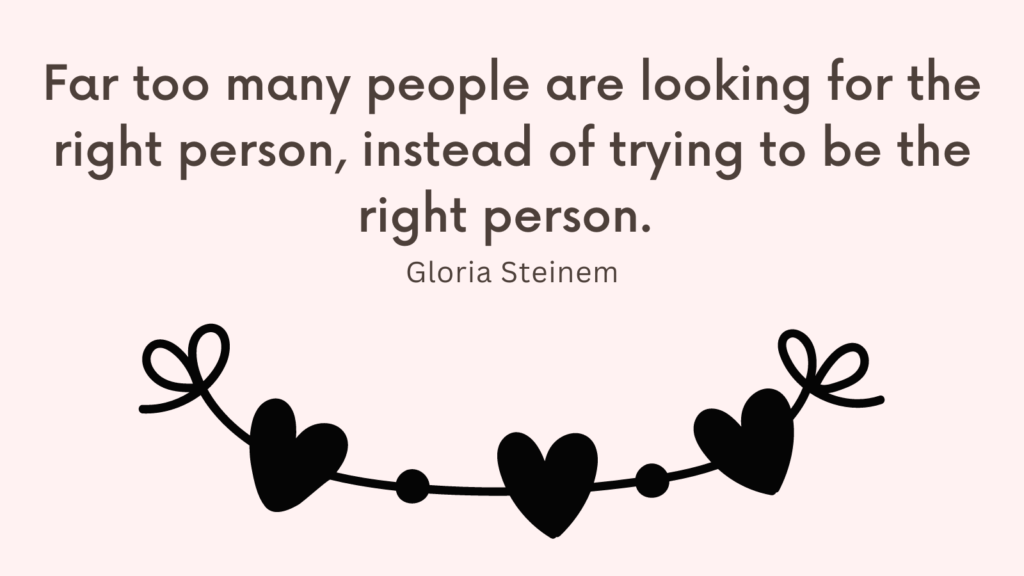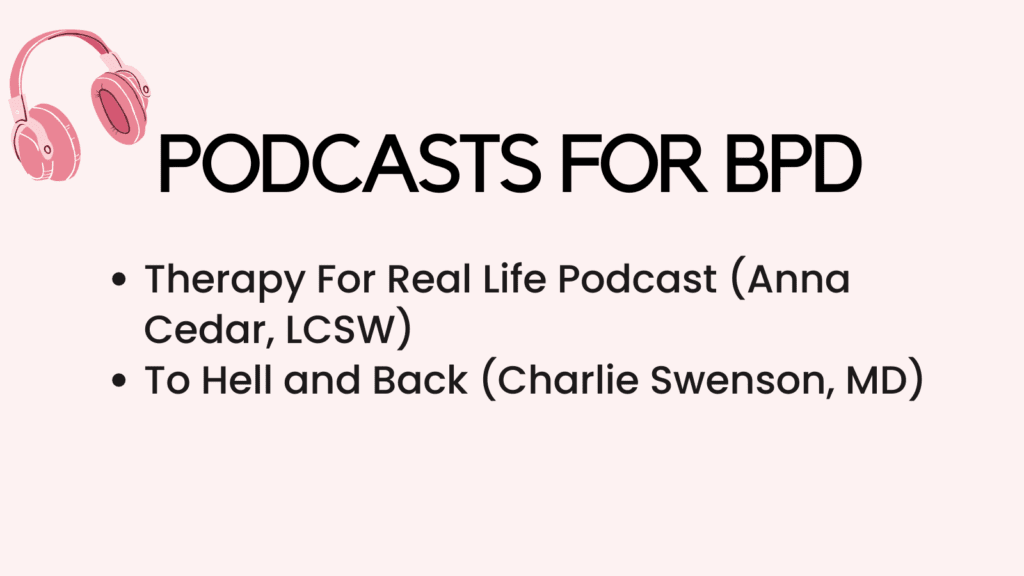Today, you’ll learn all about dating someone with Borderline Personality Disorder without becoming a caretaker, and support your partner in healthier ways.
The borderline person seems highly unpredictable, suddenly changing behaviors, pulling you in, and then pushing you away.
However, a lot of the confusion you feel comes from expecting the borderline person to act “normal.”
Borderline Personality Disorder (BPD)
Borderline personality disorder (BPD) is described by the Diagnostic and Statistical Manual of Mental Disorders DSM-5 as a “pervasive pattern of instability of interpersonal relationships, self-image and affects or moods, and marked impulsivity, beginning by early adulthood and present in a variety of contexts,” including at least five of the following:
9 Signs You’re Dating Someone With BPD
1. Frantic efforts to avoid real or imagined abandonment.
The borderline person can become frantic when he finds himself having lunch alone or having to be at home alone.
He may call loved ones dozens of times an hour, have crying fits, and even cut himself to lessen the emotional pain of being alone.
2. A pattern of unstable and intense interpersonal relationships.
The borderline person can go from intense love and adoration to intense hate and anger in minutes.
3. Unstable self-image or sense of self.
The borderline person sees himself as all good or all bad, superior or inferior, and finds it hard to hold in mind different qualities of personality together at the same time.
4. Impulsivity.
Because of their intense, fluctuating emotions, the borderline person often acts impulsively.
He may throw things, shout in public, or propose to someone he’s just met.
It makes it very hard to predict how a borderline person may act in any given moment.
5. Recurrent suicidal behavior, gestures, or threats of self-mutilation.
The borderline person’s emotional reactions to loss, fear, or abandonment can be extreme.
He believes that the feeling will, literally, never go away, so for him, suicide often seems to be the only answer.
6. Mood instability, reactivity, depression, anxiety, rage, and despair.
The borderline person can be very fast to change moods, sometimes within minutes, and is extremely vulnerable to falling into negative emotions.
7. Chronic feelings of emptiness.
The borderline person can often feel invisible to others and may also have no sense of who he is, what he wants in life, or what his values, or beliefs are.
8. Inappropriate intense anger or difficulty controlling anger.
The borderline person may act physically abusive by hitting, throwing things, screaming, or threatening harm.
9. Transient, stress-related paranoid ideas or severe dissociative symptoms.
The borderline person can instantaneously flip between idealizing a loved one to seeing the same loved one as a threatening enemy.
In addition, the borderline person may forget what he said and did a few hours or a day later, pretending that it never happened or that it’s “all in the past.”
He almost never understands the emotional impact of his deeds on his loved ones.
Why Borderline Personality Disorder Is Misdiagnosed?
BPD can be difficult to identify because the behaviors presented above can be displayed by anyone on occasion, especially under stress.
For the borderline person, it’s a difference in intensity and frequency, and control. These behaviors can even occur several times an hour and be shockingly sudden and intense. They seem entirely out of the control of the borderline person.
How Borderline Personality Disorder Develops
Research shows that the borderline person has a genetic or biological vulnerability that is brought out when high-stress situations or traumatic experiences occur during childhood. (*)
Related: Borderline Personality Disorder Treatment: How To Lead A Satisfying, Fulfilling Life?
Caretaker Personality
People who become Caretakers for a borderline person seem to have a certain set of personality traits.
However, these traits do not constitute a “personality disorder.”
They can be highly valued when they are at moderate levels and make the person easy to get along with. They include enjoying pleasing others, a desire to care for others, peacemaking, and calm and reasonable behaviors.
But being in a relationship with a borderline person, can turn these valued traits into toxic ones, such as a need to please, perfectionism, overcompliance, extreme guilt and anxiety, low self-esteem, and passivity.
Eventually, these traits become detrimental to the caretaker’s mental and physical health.
Are You a Caretaker?
People who are overly empathetic, willing to put others’ needs before their own, perfectionistic, and uncomfortable with conflict are generally vulnerable to becoming a Caretaker.
A caretaker is someone who is willing to put their own needs and wants on hold to help and/or please someone else.
They have a great aversion to feeling or expressing anger and are prone to be manipulated by fear and guilt, induced by the borderline person or by themselves.
If you grew up with a borderline person as a parent or sibling, you are more likely to pick up a partner with borderline personality because subconsciously they will seem familiar and comfortable.
Related: Healing From A Codependent Relationship: 18 Ways to Conquer Codependency
What’s The Difference Between Caretaking And Codependency?
Codependency is more pervasive than caretaking.
While caretaking occurs almost exclusively inside the relationship with the borderline person, codependency affects every aspect of a person’s life, including work, friendships, and intimate relationships.
It’s as if the caretaker lives in two different worlds with two different sets of behaviors. They can be independent and capable on their own when not in a relationship with a borderline person.
Related: 9 Signs You Might Be Emotionally Addicted — and How to Overcome Love Addiction?
Why a Borderline Person Needs a Caretaker?
Because of their intense emotions, the borderline person needs someone to rescue them, to ease and soothe their fears, and to make life less overwhelming.
The borderline person would try to push his negative feelings away by projecting them onto someone else – someone to accuse of causing the internal pain so he won’t have to face it and someone to hate so he won’t hate himself.
Moreover, the borderline person struggles with the fear of being alone or being abandoned. They need someone close to soothe those fears.
So they pull strangers into immediate closeness to transform the pain of feeling lonely into intense “love,” believing that this person is “the one.”
Best 20 Tips On Dating Someone With BPD Without Becoming A Caretaker
#1. Accept that You Can’t Change the Borderline Person
Understand and accept that nothing you can do or say will fix the thinking, feelings, or even behaviors of the borderline person. Borderline personality disorder, despite the positive changes treatment can make, is a lifelong mental illness. (*)
This acceptance can bring so much relief and calmness because now you don’t need to waste any more time or energy demanding change or trying to control the borderline person.
In other words, you’ll come to understand that any change that happens in the relationship will have to be done by you.
In a way, the question changes from “How can I change this person?” to, “What changes in myself could I make to have a better life with this person?”
Related: 5 Steps to Let Go of The Need to Control Everything
#2. Accept That You Have Control Only Over Yourself
As a caretaker, this might be an uncomfortable truth to face.
You may have spent enormous amounts of time and energy trying to change the borderline person’s feelings, thoughts, and behaviors to improve your relationship, but has it ever really worked?
If things have seemed to change at times, that has been random and not permanent because if you could really control things outside of yourself, wouldn’t you be able to do it all the time?
Moreover, focusing on trying to change things outside of yourself, limits your willingness to take responsibility for yourself and triggers feelings of anger and resentment.
Related: Get Out of Your Own Pity Party: How to Stop Pitying Yourself?
#3. Focus on What You Can Change
The truth is can only change two things: your behavior and your thoughts. These are the only things you can control.
As for your feelings, they cannot be altered directly.
You’ll have to change your behavior and thoughts, and then these changes will affect how you feel.
So if you want to feel happy, you’ll need to direct your thoughts to things that create that happiness in you and start doing things that will boost your happiness.
Related: How To Embrace Change? (5 Things You Need to Start Doing To Become A Better Person)
#4. Don’t Take Anything Personally
Don’t take what the borderline person says or does personally.
The borderline person tends to blame others for most of everything their think, feel, or do. This is a defense mechanism called projection.
It is a way for the borderline person to disown their awful feelings.
You need to stop taking the responsibility for those feelings of the borderline person and stop giving into whatever they want.
#5. Change How You Communicate
The Yale communication model offers a good process to follow when expressing something that is bothering you, especially to highly sensitive people like borderline person:
1. Statement of an observable fact “ When … happens”
For example, “When I see dirty dishes in the sink…”
This statement doesn’t employ the word “you.” It doesn’t judge or blame the other person, which lessens their defensiveness.
2. Clearly state your own feelings “I feel …”
Again, you are not using the word “you.” Rather you are taking responsibility for your own feelings, ending the blame game.
This will also help you connect with yourself, identify your feelings and accept them. It validates your experience and empowers you.
3. Letting the other person know what you want “I would like …”
Convey your request for an action or a change in what is happening. Make it as specific as possible.
If you find it hard to give yourself permission to ask for what you want, this can help you practice identifying your needs and asking for them rather than manipulating and/or expecting the other person to read your mind.
If the person disagrees, you may negotiate another solution that will be satisfactory to both of you.
4. If the person is not willing to cooperate (e.g. ignores you or is passive-aggressive), use the statement “Or I will need to …”
This model helps you convey the problem, how you feel about it, and what you want. It is clear and non-judgmental.
This isn’t used as a threat or a punishment. It simply communicates to the other person that you’ll take care of yourself, by removing yourself from the situation or the conversation.
Related: How to Be More Effective in Relationships (Effective Communication)
#6. Set Healthy Emotional Boundaries
Boundaries separate us from others. They identify where we (thoughts, feelings, needs, responsibilities, etc.) begin and end.
You cannot let go of caretaking without setting new, healthy boundaries.
Being in a relationship with a borderline person, you may believe that there should be no boundaries in the relationship in order to please the other person. But you and the borderline person are not “one.”
Emotional boundaries will help you identify and fulfill your own inner needs and desires and protect you from taking on responsibilities that are not yours.
A general way of setting boundaries involves saying “No,” solving only your own problems, using your own beliefs and values to direct your life, and staying with your own feelings even when the other person has different feelings.
Related: How to Firmly Establish and Enforce Healthy Emotional Boundaries?
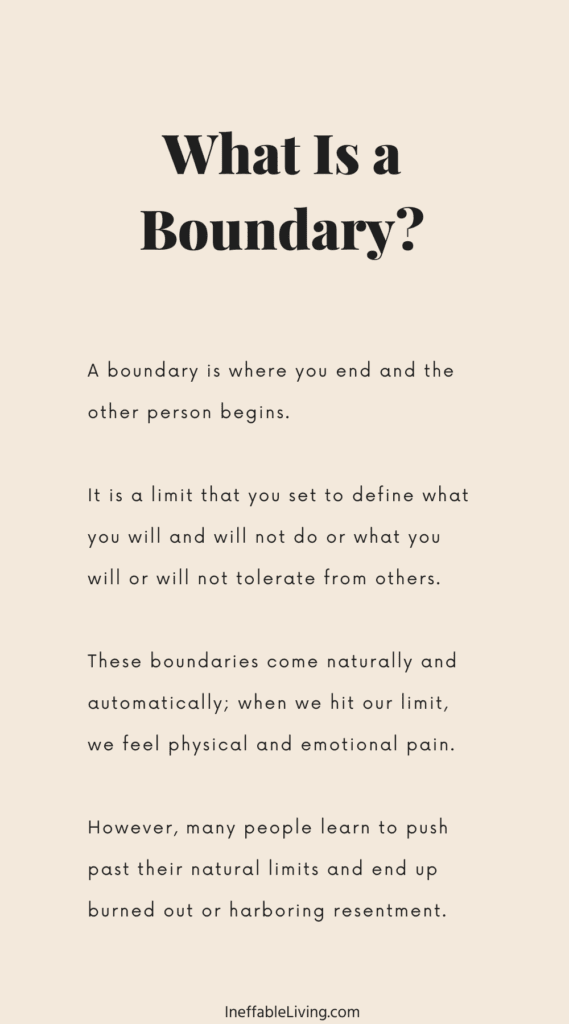
#7. Learn How to Say “No”
It can be extremely difficult to say “no” to a borderline person.
The word “no” separates your wants and needs from those of the borderline person. This can trigger a strong reaction from the borderline person, including:
- Threatening you,
- Calling you names,
- Demanding that you agree,
- Ignoring your “no,”
- Invalidating your opinion, by saying that didn’t really mean what you said.
This is why you need to stick to your “no.”
Start practicing saying “no” everyday. For example, if the borderline person asks, “Would you like another piece of pie?” simply say, “No, thank you.” and stick to it.
Another challenge is facing your inner feelings of guilt. Remind yourself that saying no is about expressing your own desires and is something to be respected. It does not hurt anyone’s feelings, nor does it mean that you care less about them.
#8. Start Asking For What You Want
As a caretaker, you may find it uncomfortable to ask others for the things you constantly give.
You may believe that someone who cares about you should give you these things without you having to ask.
Remind yourself that people cannot read your mind and that asking for what you need doesn’t mean you’ll be imposing yourself.
Start small. Make simple requests, such as asking your partner, for example, to bring you a glass of water when they go into the kitchen, and then increase the importance of your requests.
Related: How to Improve Your Social Skills? 30 Little Tricks To Success In Relationships
#9. Don’t Explain Your Decisions
When you decide to do something different from the borderline person or do things you love in general, expect the borderline person to coerce you to change your mind.
This is because the borderline person may view “different” as a sign of abandonment.
He may question your decision by saying something like, “Why would you want to do that?” If you’re to explain yourself, the borderline person may use the information to prove that your choices or feelings are wrong.
Instead, try saying something like, “This is something I want to do, and I understand that it is different from what you like to do.”
The truth is you don’t have to give people explanations for what you do unless you want to.
Focus on getting your own approval instead of getting approval from the borderline person. This will help you stick to your decision.
#10. Start Taking Action
Making changes in the relationship with a borderline person rarely happens through making agreements or coming to an understanding.
The borderline person can be emotional and may jump instantaneously from topic to topic.
In order to make a change, you need to decide what you want to do differently and take action.
For example, if you want to stop having fights with the borderline person, don’t respond defensively or leave the conversation as soon as they become defensive or feel that the conversation is going nowhere.
If you need the borderline person to do something, but they stubbornly refuse to do it, do it yourself.
#11. Breaking The Superior/Inferior Game
Often, interactions with the borderline person are based on who is better than/worse than, right/wrong, who is to blame/who is the victim.
Breaking the rule of superior/inferior requires you to take responsibility for your own decisions, including your feelings, thoughts, and interpretations, and allow the borderline person to do the same.
This means you accept yourself and the borderline person and no longer try to rescue or persecute them.
#12. Stop Being a Victim or Taking The Blame
Although you may think you are being helpful and nice, you may find yourself feeling passive and powerless and feeling like a victim.
This leaves you feeling disempowered and prevents you from figuring out what you really feel, what you really want, and what actions could get you going in a new direction.
Conversely, the borderline person may blame you for his feelings and problems in a way that leaves you feeling guilty.
Being a caretaker, this may make you feel responsible for the borderline person’s feeling and obliged to fix their problems.
The truth is everyone is only responsible for their own feelings, thoughts, and behaviors.
This means that if the borderline person does something you don’t like, you say or do something about it, without blaming them for causing your feelings and actions.
This also means that you need to stop rescuing the borderline person, just because they blame you for their feelings or problems, doesn’t mean you have to take the blame. Allow them to take their own responsibility.
Related: Regulate Your Emotions: How To Control Your Intense Emotions?
#13. Let Go of Feelings of Guilt
As a caretaker, you may feel intense guilt about making any changes in yourself, fearing it may be devastating to the borderline person.
While it’s true that your decisions will have an effect on the borderline person, worrying about what the borderline person might feel, say, or do doesn’t lead you to make good decisions.
There are better ways to solve problems and handle delicate situations with the borderline person.
It’s important to keep in mind that just as you can’t change the borderline person’s behavior, you can’t cause their behavior. You are not responsible for their feelings, thoughts, or behaviors.
#14. Stick to It, and Things Will Start to Change
Challenging the borderline person’s rules and is usually met with resistance.
It’s important for you to get your own approval and change your distorted beliefs around your own right and your responsibilities toward the borderline person.
You may want to practice your new behaviors with your friends or family members before you can stand firm against the borderline person’s anger and guilt-tripping.
#15. Give Up Shame
Guilt comes from feeling that you have made a mistake.
Shame, on the other hand, comes from the feeling that you are a mistake, or that there is something wrong with you as a person.
Holding onto shame prevents you from loving yourself enough to live the life you want and take better care of yourself.
If you find it difficult to identify feelings of shame, here are some signs:
- You don’t let people see your mistakes.
- You don’t like your body.
- You hide your emotions.
- You are afraid that others will reject you.
- You think that others are judging you.
- You believe that no one will ever love you.
- You feel like you have little impact.
Letting go of shame happens simultaneously as you take care of yourself.
Related: How To Let Go Of Shame After Trauma?
#16. Move From Caretaking to Self-Care
Letting go of caretaking, you’ll need to rebuild your individuality and your sense of self-esteem and self-worth. The way to do this is through self-care.
This may involve making friends with emotionally healthy people, changing your negative self-talk, identifying your own needs and meeting them, treating yourself lovingly, etc.
Self-care doesn’t mean self-absorption. You’ll still be able to take care of others, but this time not at your own expense and without strings attached.
Related: 45 Easy Self Care Day Ideas at Home for a Healthy Mind, Body & Soul

#17. Own Your Life
Stop waiting for the borderline person’s approval or support.
Your own approval and support are all you need to create the life you want.
This may require you to learn how to withstand the borderline person’s disapproval.
This will also require you to know more about yourself: What you want to do with your life. How you want to feel, think, and act.
Get busy thinking about yourself and what you want to achieve.
Individual therapy and support groups can also be a great source of support and validation.
Related: How to Challenge and Change Your Negative Core Beliefs?
#18. Increase Your Sense of Self-Respect
Self-respect is to consider yourself being worthy of high regard.
To increase your sense of self-respect, you need to start identifying and meeting your own needs.
These needs include:
- Identifying what you feel
- Identifying what you want
- Defining goals for yourself
- Acknowledging your strengths
- Accepting your shortcomings without self-blame
- Honoring your own preferences
- Taking good care of yourself
- Protecting yourself
You also need to start seeing yourself as worthy. This means that you know your own value and treat yourself and expect to be treated according to that value.
This isn’t to say that you need to control how others treat you, but if someone is treating you poorly and you are allowing it, you’re not giving yourself the respect you deserve.
If you’re being treated poorly, you need to speak up and let the other person know that you won’t be tolerating that kind of treatment.
Again, you can’t change the way you feel about yourself directly, you’ll need to start changing your thoughts and behaviors around self-respect, before you can feel it.
Related: Building Self-Confidence: How To Gain Confidence Quickly And Improve Your Self-Esteem?
Spend some time alone where you won’t be disturbed. Use that time to think, read a book, meditate, take a bath, go for a walk, or do anything you want.
#19. Create A Regular Alone Time
Spending regular alone time is a great way to nurture yourself and lower your anxiety.
If you find it hard to have your own space without the borderline person interrupting, choose activities that you love and that your partner doesn’t enjoy.
Avoid addictive activities such as shopping, surfing the Internet and chat rooms, watching hours of television, drinking alcohol, overeating, etc.
These activities are avoidance techniques that perpetuate the problem rather than help you face it.
Related: How to Happily Spend Time Alone With Yourself and Actually Enjoy It?
#20. Practice Positive Self-Talk and Positive Action
Changing your self-talk is an important step in healing and improving your sense of self-esteem.
Affirmations, which are positive statements you repeat to yourself over and over, can help here.
However, words alone won’t change the way you feel about yourself, you’ll also need to take positive action and give yourself better treatment.
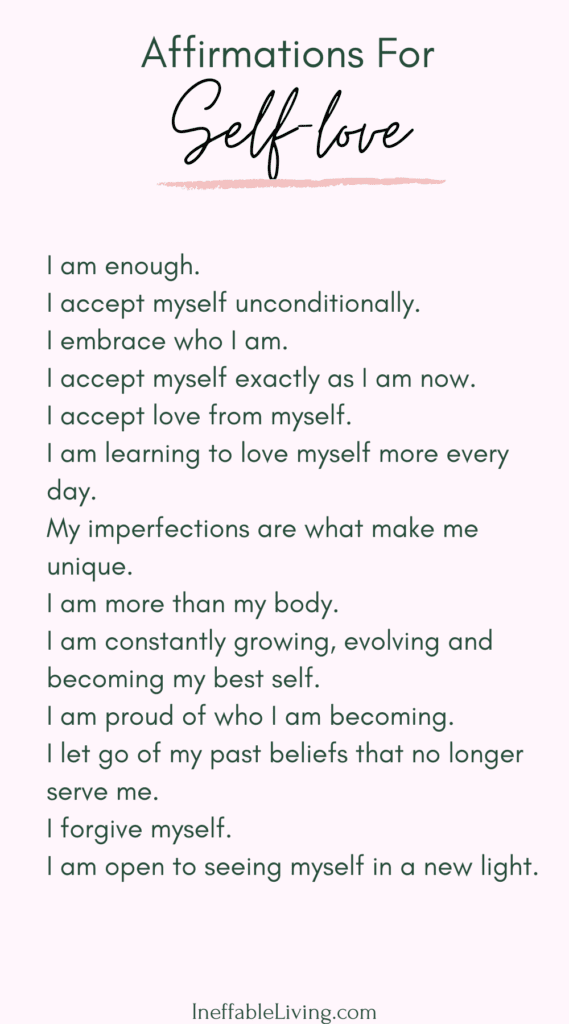
How to Help Someone With BPD In A Relationship?
Loving someone with BPD isn’t simple – it requires a lot of preparation and understanding.
Watching a loved one battle with profound inward distress can be agonizing. Moreover, even ordinary communication can be weighed down with the potential danger of an outburst in case the person with BPD misreads your tone or accepted what you say as an indication of dismissal.
#1. Recognize the Realness of BPD
Individuals with BPD aren’t just being troublesome or intentionally trying to hurt you.
Their profound mental pain is being aggravated by their lack of tools to adapt to overpowering feelings.
You might feel as though your words and acts are not enlisting in the way you expect, which is actually what’s going on. This is why you need to figure out how to adapt to this distinction between real factors.
The right approach to do that isn’t to try to persuade them that they are incorrect – doing so will probably cause them to feel attacked, and they will probably react by pushing you away. Rather, validate their emotions and recognize the realness of their experiences.
#2. Find Role Models
Focus on what’s healthy not what’s normal.
Find emotionally healthy people who are happy, fulfilled, and enjoying healthy relationships.
Hang out with these people and move more into their circle.
#3. Detach With Love
Detachment doesn’t mean not caring about the other person.
It simply means to take care of yourself first and allow the other person to take responsibility for their own decisions and actions.
When you detach or let go, you stop allowing your entire attention, choices, and behaviors to revolve around the borderline person and start enjoying a relationship that is based on the two of you being different.
#4. Provide Emotional Validation
Emotional is essential in loving someone with BPD.
If your loved one is vexed because they think you are dismissing them, state, “I can see how hurt you feel because you thought I was dismissing you. That must feel horrible.”
Resist the urge to persuade them that you weren’t dismissing them. Instead, focus on comprehending what they have just felt and communicating your understanding to them.
By allowing them to feel their emotions and showing them that you understand their agony without judgment, you are giving them love and helping them build trust, while keeping away from a pointless outrage.
Recognize the full humankind of your loved one. Just because someone has BPD doesn’t imply that their emotions are constantly determined by brokenness.
Related: The Art of Validation: How to Comfort and Support Someone Without Giving Advice?
#5. Remain Calm
When your partner is experiencing intense emotions, try to remain calm but also involved.
Remind yourself that even though their reaction is out of proportion to the situation, it’s overwhelmingly painful to them.
This isn’t to say that you have to agree with their reaction or think that it’s justified.
This is about helping them feel listened to and acknowledging the difficulty they are having in dealing with this pain.
Encourage them to take a little time alone to collect themselves and reasonably discuss the relevant issues when they feel calmer.
#6. Express Your Feelings Openly
Taking a disinterested approach will only intensify your partner’s emotions.
The more openly you express your feelings, the fewer misunderstandings you’ll have in your relationship.

#7. Plan Ahead For Destructive Behaviors
Help your partner develop a clear understanding of the consequences of destructive behaviors, such as alcohol and drug abuse, self harm, excessive spending, etc.
Make a plan of healthy alternative coping strategies and encourage and support consistent follow-through with the plan.
#8. Support High-Quality Treatment
Your way to love someone with BPD is understanding and not fixing them. You can support can be a priceless help, but you can’t mend their sickness. What you can do is assist them with their choice of treatment.
Treatment choices usually involve psychotherapy, medications and group and family support.
Momentary hospitalization has not been proven more powerful than network care for helping individuals with BPD avoid self-destructive conduct.
1. Psychotherapy
Psychotherapy helps calm a few side effects of BPD and lessen the individual’s desire to self-harm.
Psychotherapy for BPD includes dialectical behavioral therapy (DBT), cognitive behavioral therapy (CBT) and psychodynamic psychotherapy.
2. Medication
Although many individuals with BPD take medication, the Food and Drug Administration (FDA) has not affirmed any meds specifically for the treatment of BPD.
This doesn’t mean that medication isn’t useful, but medicine isn’t a remedy for BPD.
#9. Things to Keep In Mind
1. Try not to take BPD behaviors personally – People with BPD struggle to control emotions. However, not taking things personally doesn’t mean that you allow yourself to be abused — whether emotionally or physically.
Related: 30 Signs You Were Emotionally Abused and How to Overcome Emotional Abuse
2. Reach out to support groups or a therapist to help maintain your physical and mental health.
3. Don’t try to be a therapist – Trying to solve the problems that your loved one is experiencing can make matters worse.
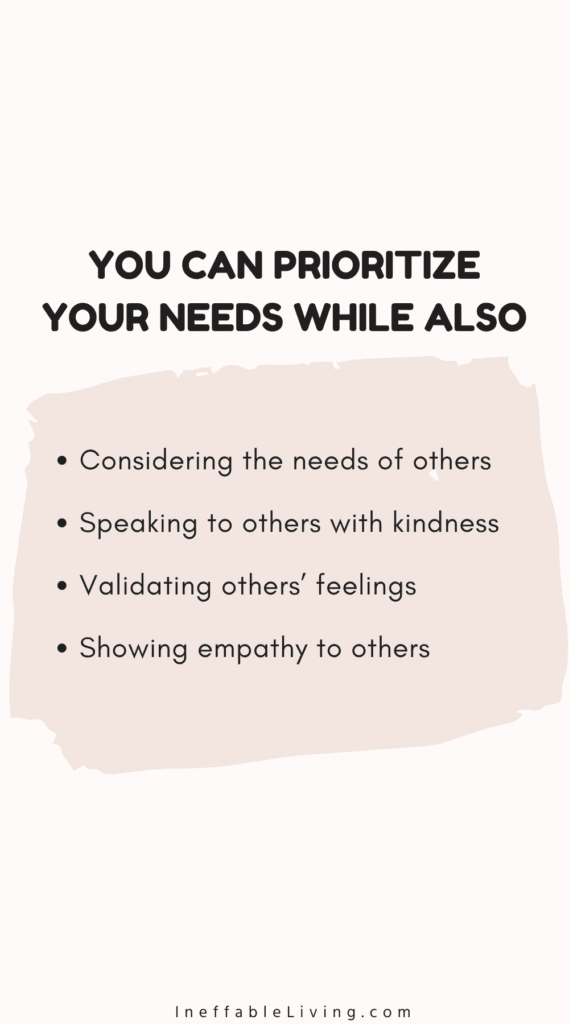
FAQ
Should You Tell Your Partner They Have Borderline Personality Disorder?
Reading about the disorder may get you excited to talk about BPD with the person you think has it.
In your mind, the news is going to be transformational, person will be grateful and will rush into therapy to get proper treatment.
Unfortunately, the reality is likely to be different. The news that they might have BPD will probably leave them enraged and lead to a torrent of criticism.
Another scenario: The person with BPD traits may feel a deep sense of shame and hopelessness, and attempt to hurt themselves. They may also use the information to deny responsibility for their behavior claiming that they can’t help it.
In general, it’s preferable that the person learns about BPD from a therapist.
The Exception
There are some cases when you might carefully discuss BPD with your partner, like when they are actively seeking answers for the way they feel and behave.
Resources
Web Sites with More Information
Borderline Personality Disorder Resource Center (https://bpdresourcecenter.org): This site contains statistics, research, and resources for families and professionals of people with BPD.
BPD Central (www.bpdcentral.com):This site focuses on BPD and provides support groups, and information for choosing BPD mental health counselors in the United States and some other areas of the world.
National Education Alliance for Borderline Personality Disorder (www.borderlinepersonalitydisorder.com): This site contains information about BPD for families and professionals
The American Psychiatric Association (www.psych.org): This organization is made up of medical specialists and offers information about BPD and other mental disorders.
The American Psychological Association (www.apa.org): This professional and scientific organization offers fact sheets and information about BPD and other emotional disorders.
FREE Printable Relationship Worksheets (PDF)
References
- Portions of this article were adapted from the book Stop Caretaking the Borderline Or Narcissist: How to End the Drama and Get on with Life, © 2013 by Margalis Fjelstad. All rights reserved.
- Portions of this article were adapted from the book Borderline Personality Disorder: Effect, Suggestions and Solution, © 2020 by Albert Piaget. All rights reserved.
- Portions of this article were adapted from the book Borderline Personality Disorder for Dummies, © 2009 by Charles H. Elliott and Laura L. Smith. All rights reserved.
- How to Stop Being a Pushover: Five Secrets From Research | Observer
- Stop Caretaking the Borderline or Narcissist: How to End the Drama and Get on with Life – PMC (nih.gov)
- Psychological distress in caretakers or relatives of patients with borderline personality disorder – PubMed (nih.gov)
- Signs You Are a ‘Caretaker’ in Romantic Relationships (businessinsider.com)


